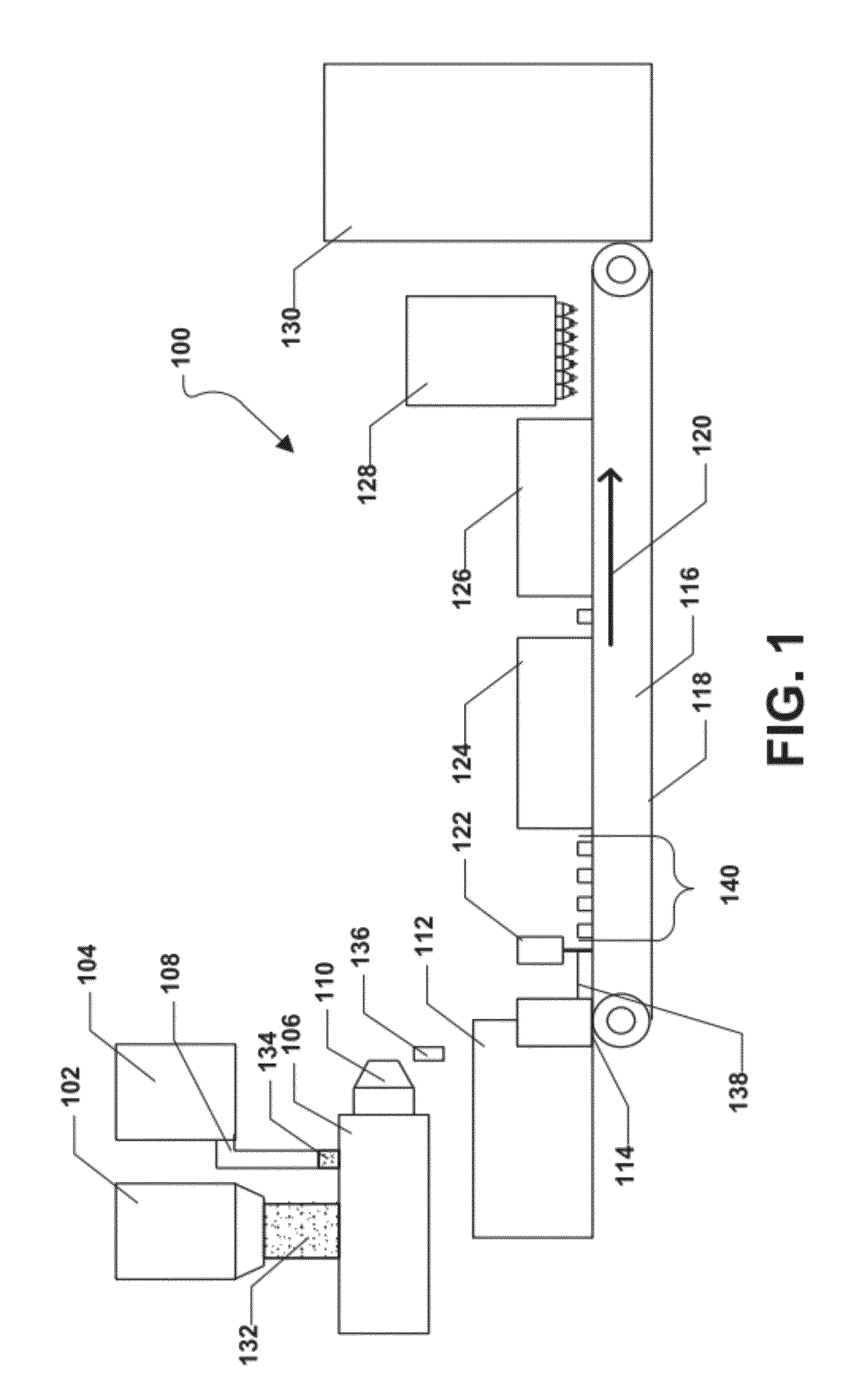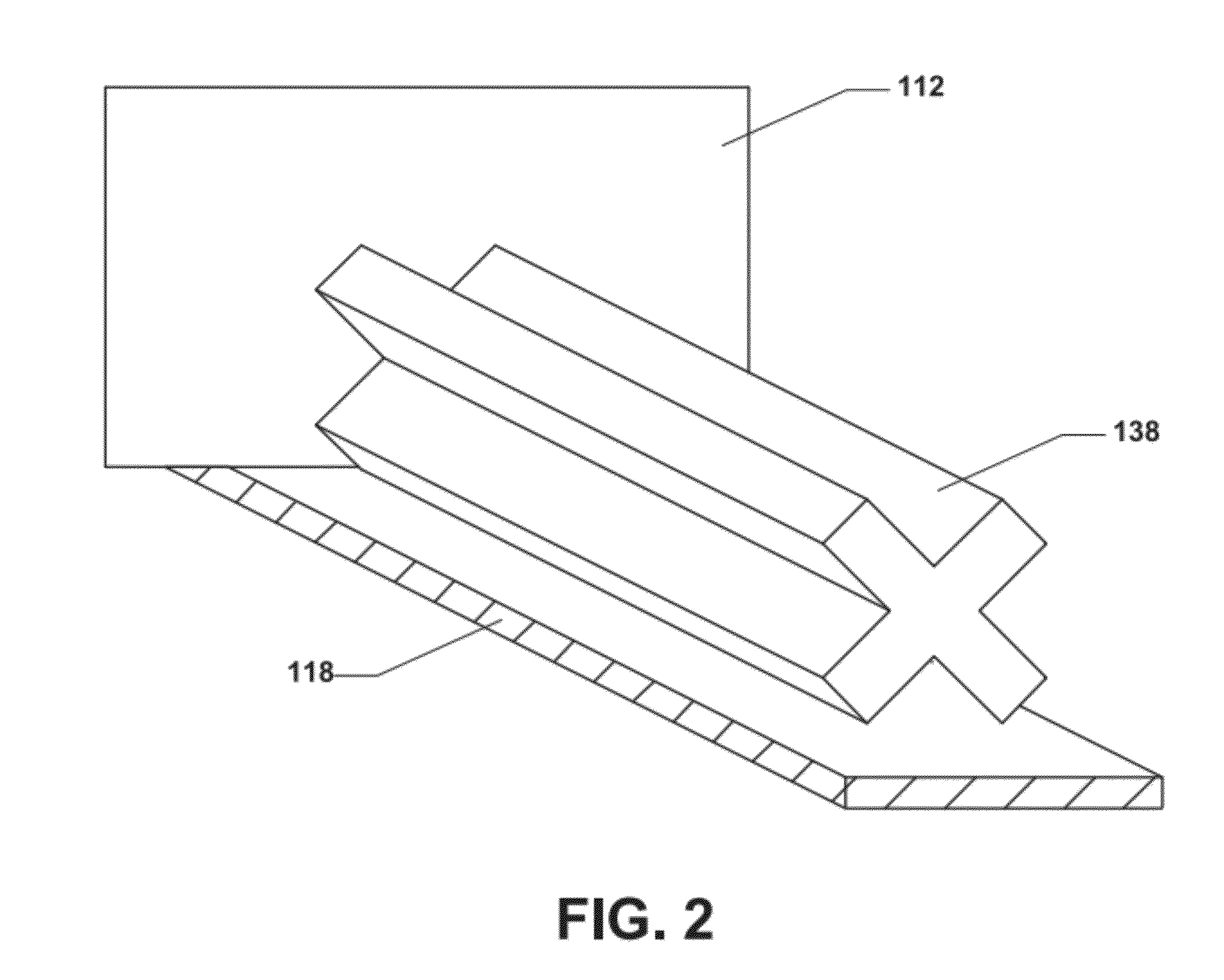Method of forming a shaped abrasive particle
a technology of shaped abrasives and particle forming, which is applied in the direction of presses, manufacturing tools, other chemical processes, etc., can solve the problems of unreliable typical techniques for forming structured abrasives, slow production, and performance limitations
- Summary
- Abstract
- Description
- Claims
- Application Information
AI Technical Summary
Benefits of technology
Problems solved by technology
Method used
Image
Examples
example 1
[0117]A first sample of extruded shaped abrasive particles are formed from an initial mixture containing a modified boehmitic feedstock material for extrusion that is prepared as described below. Into a 500 gallon stainless steel tank equipped with a sweep agitator and a high shear dispersing blade are charged 2460 lbs of deionized water followed by 216 lbs of alpha alumina seed slurry said slurry having 4% by weight alpha alumina seed. The alpha alumina slurry itself is prepared by milling nano alpha alumina obtained by calcination of seeded sol gel as taught in U.S. Pat. No. 4,657,754. Next, 1188 lbs of boehmite (Catapal B manufactured By Sasol Inc.) is added over a period of 10 minutes followed by 82 lbs of 22% by weight nitric acid. After mixing and shearing for approximately 10 minutes the mixture is continuously fed at a rate of 3.4 gallons per minute with a high pressure pump into a heat exchanger. The heat exchanger is a 1 inch helical stainless steel coil 200 feet in length...
example 2
[0127]Abrasive grains were made using the same method as example 1 except that in this case rods were extruded. The diameter of the circular hole in the die was 0.86 mm. The aspect ratio of the rods was approximately 2:1 length:diameter. A coated abrasive belt was fabricated by conventional means by electrostatically projecting the rods onto a moving web of cloth coated with phenolic resin. A size coat of resin was applied to the belt to ensure grain adhesion and support and the resulting cured belt was tested under the conditions detailed below.[0128]Power Assist Plunge (fixed feed belt tester)—#28669[0129]304 Stainless Steel[0130]1″×1″×48″[0131]450[0132]5700 sfpm[0133]18″ / min.infeed
[0134]It was found that the extruded rods cumulatively cut 1781 grams of the workpiece demonstrating valuable abrasive utility. The results of the test are provided in FIG. 27, which is a plot of cumulative material removed (g) versus time (min.) for the extruded rod sample (TG50) and commercially avail...
PUM
| Property | Measurement | Unit |
|---|---|---|
| Temperature | aaaaa | aaaaa |
| Time | aaaaa | aaaaa |
| Pressure | aaaaa | aaaaa |
Abstract
Description
Claims
Application Information
 Login to View More
Login to View More - R&D
- Intellectual Property
- Life Sciences
- Materials
- Tech Scout
- Unparalleled Data Quality
- Higher Quality Content
- 60% Fewer Hallucinations
Browse by: Latest US Patents, China's latest patents, Technical Efficacy Thesaurus, Application Domain, Technology Topic, Popular Technical Reports.
© 2025 PatSnap. All rights reserved.Legal|Privacy policy|Modern Slavery Act Transparency Statement|Sitemap|About US| Contact US: help@patsnap.com



